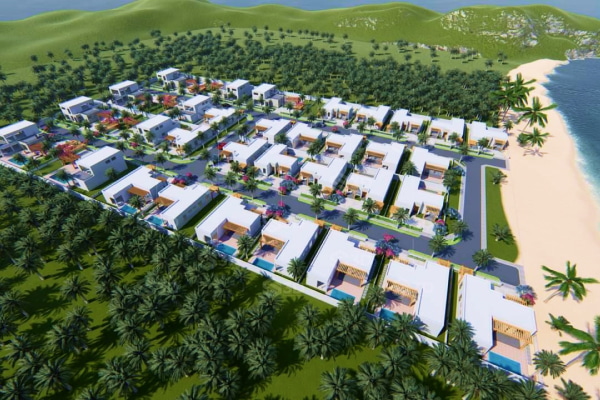Why 3D Rendering Companies in Thailand and Asia Have Competitive Advantages

3D Rendering in Thailand
In today’s globalized digital marketplace, 3D rendering services have become essential for industries ranging from architecture and real estate to product design and entertainment. While European and American companies have traditionally dominated this sector, rendering firms based in Thailand and throughout Asia have emerged as formidable competitors, offering distinct advantages that make them increasingly attractive to global clients.
Cost-Effectiveness Without Compromising Quality
Perhaps the most significant advantage Asian 3D rendering companies offer is cost-effectiveness. According to research by Grand View Research, labor costs in Southeast Asian countries can be 40-60% lower than in Western nations (Grand View Research, 2023). This translates directly to more competitive pricing for clients while maintaining quality standards that meet international expectations.
A 2023 industry analysis by Mordor Intelligence noted that “3D rendering services in Thailand and neighboring countries typically cost 30-50% less than equivalent services in North America and Western Europe, creating significant value for clients operating with limited budgets” (Mordor Intelligence, 2023).
Time Zone Advantages for Continuous Workflow
The geographical positioning of Asian rendering companies creates a natural workflow advantage that benefits global clients. When businesses in Europe and America end their workday, studios in Thailand are just beginning theirs. This time difference enables what industry experts call a “follow-the-sun” production model.
“The time zone difference between Southeast Asia and Western markets creates a 24-hour production cycle that accelerates project completion,” explains the Asia Pacific 3D Visualization Association in their 2024 industry report. “Projects submitted from Europe in the evening can be processed overnight and delivered by the next business morning” (APVA, 2024).
Growing Technical Expertise and Talent Pool
Asian countries have made substantial investments in technical education over the past decade. According to UNESCO’s Institute for Statistics, countries like Thailand, Malaysia, and Vietnam have seen a 35% increase in STEM graduates between 2015 and 2023 (UNESCO, 2023).
The Thailand Digital Economy Promotion Agency reports that specialized digital arts programs have produced over 15,000 graduates with 3D modeling and rendering skills since 2018 (DEPA, 2024). This growing talent pool combines technical proficiency with competitive wage expectations, allowing Asian rendering companies to offer excellent value.
Supportive Government Policies
Many Asian governments have implemented policies specifically designed to support digital creative industries. The Thailand 4.0 initiative, for example, provides tax incentives for technology companies and subsidizes training programs for digital skills development (Thailand Board of Investment, 2023).
Similar initiatives exist across the region, resulting in reliable digital infrastructure that supports the data-intensive requirements of professional rendering services. According to the Asian Development Bank, internet speeds in urban centers across Southeast Asia now rival or exceed those in many Western cities, while operating at a fraction of the cost (ADB Digital Development Report, 2024).
Cultural Versatility and International Perspective
Many Asian rendering studios have deliberately cultivated teams with cross-cultural awareness and international experience. Research from the International Association of Visualization Professionals found that 43% of senior artists in Thailand’s top rendering firms have either studied or worked abroad (IAVP, 2023).
This international exposure allows these professionals to understand Western design sensibilities and communication styles while operating within Asia’s more cost-effective business environment.
Conclusion
The combination of cost advantages, favorable time zone differences, growing technical expertise, supportive government policies, and cultural versatility positions Thai and Asian 3D rendering companies as increasingly attractive options for global clients. As digital connectivity continues to shrink geographical barriers, these competitive advantages will likely strengthen the position of Asian rendering firms in the global marketplace.
For businesses seeking high-quality visualization services within constrained budgets, partnering with rendering companies based in Thailand and across Asia offers a compelling value proposition that increasingly challenges the traditional dominance of Western studios.
References
Asian Development Bank. (2024). Digital Development Report: Infrastructure and Connectivity in Southeast Asia.
Asia Pacific 3D Visualization Association. (2024). State of the Industry Report.
DEPA Thailand. (2024). Digital Workforce Development Annual Report.
Grand View Research. (2023). Global 3D Rendering Market Analysis: Regional Cost Structures and Competitive Advantages.
International Association of Visualization Professionals. (2023). Global Workforce Survey: Experience and Education in 3D Visualization.
Mordor Intelligence. (2023). 3D Rendering Services Market – Growth, Trends, and Forecasts (2023-2028).
Thailand Board of Investment. (2023). Digital Economy Investment Incentives under Thailand 4.0.
UNESCO Institute for Statistics. (2023). Higher Education Outcomes in Science and Technology Fields: Regional Analysis.












